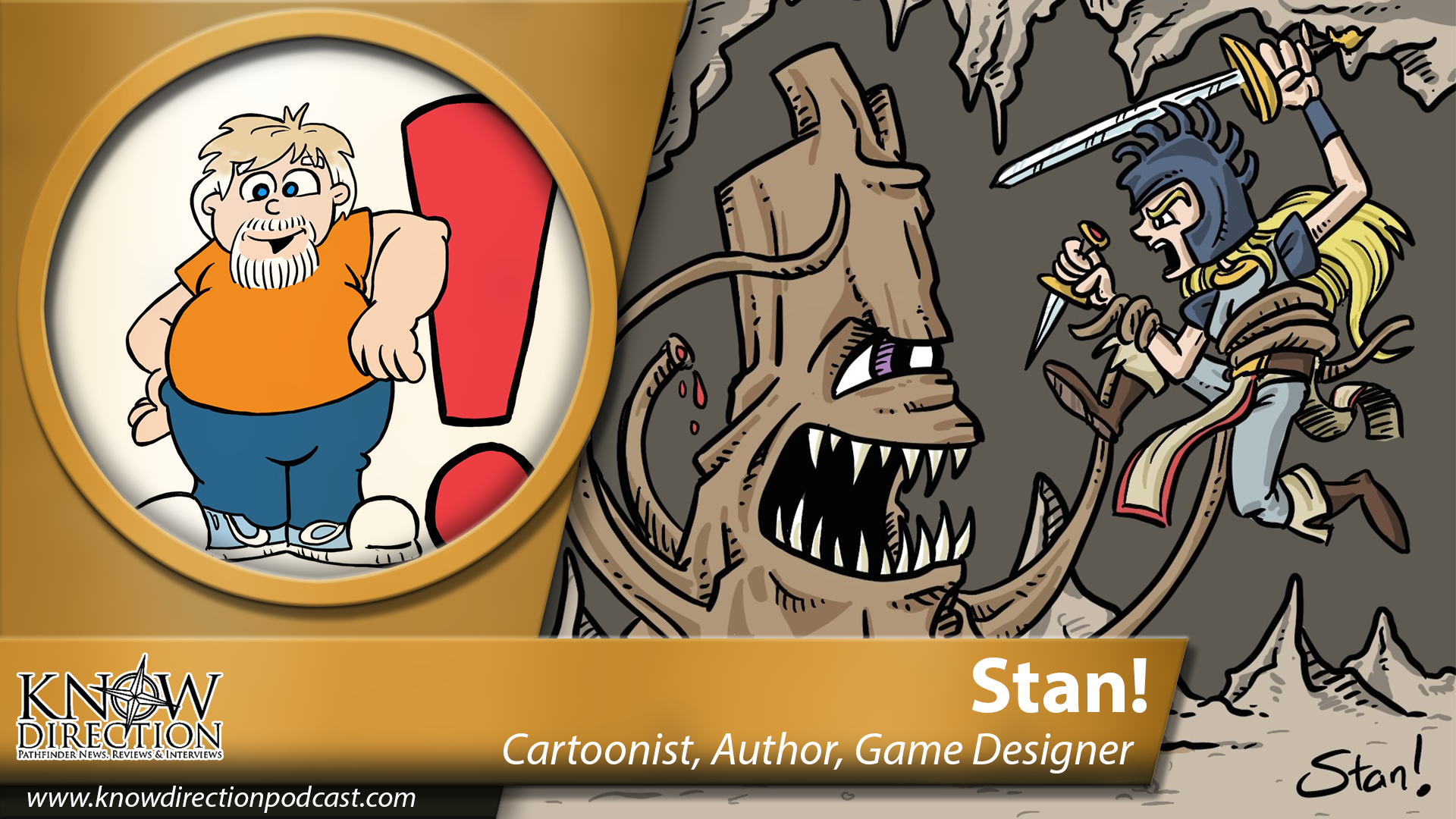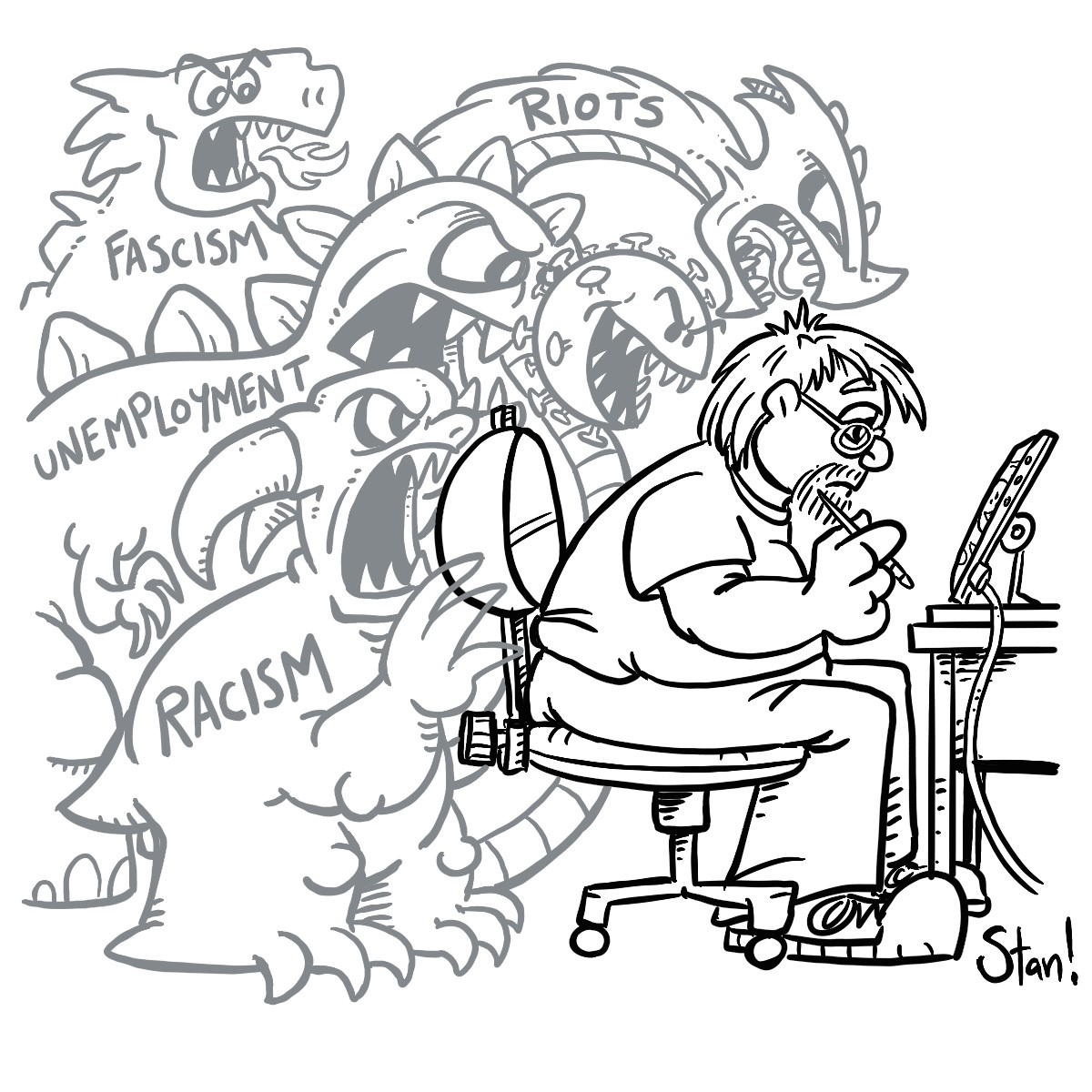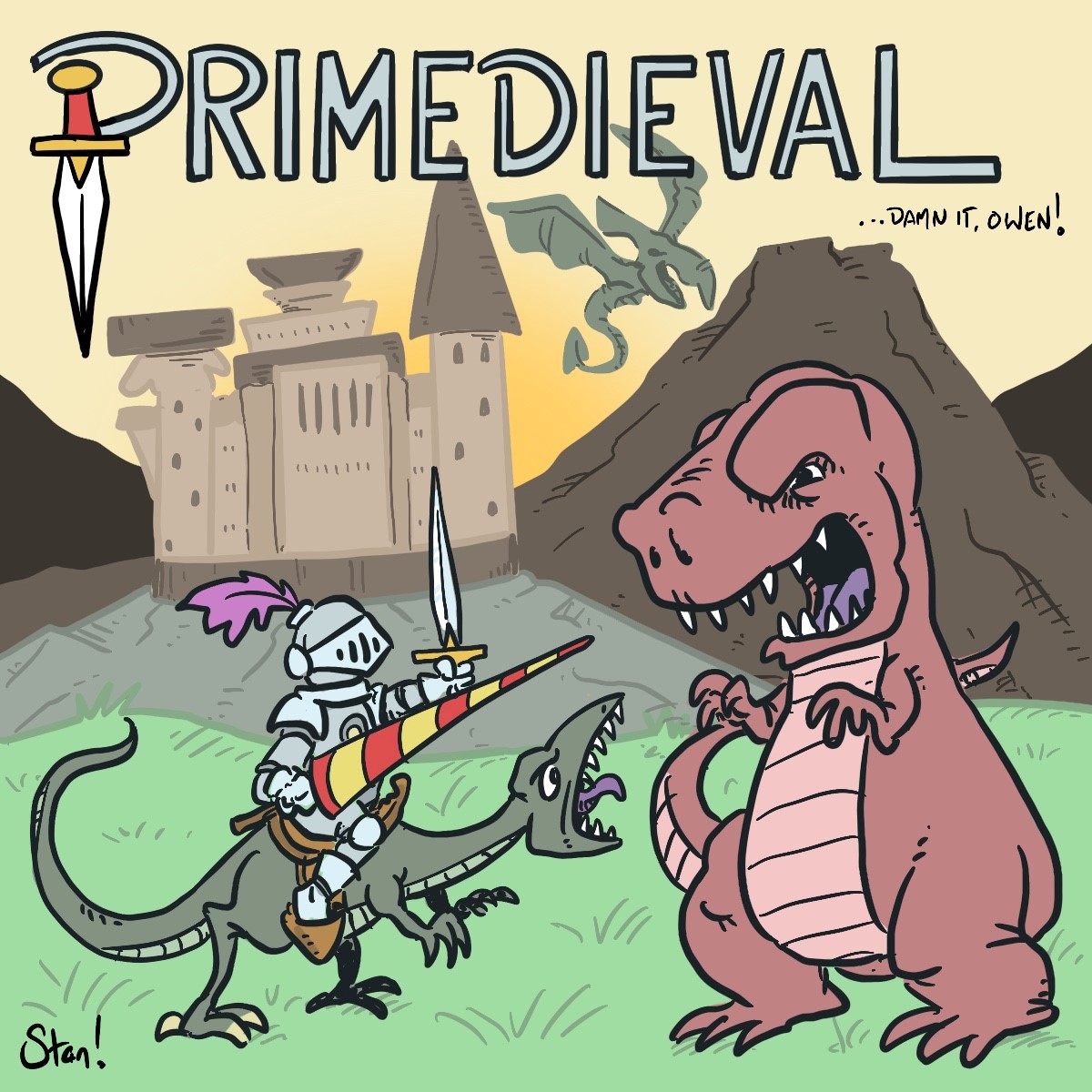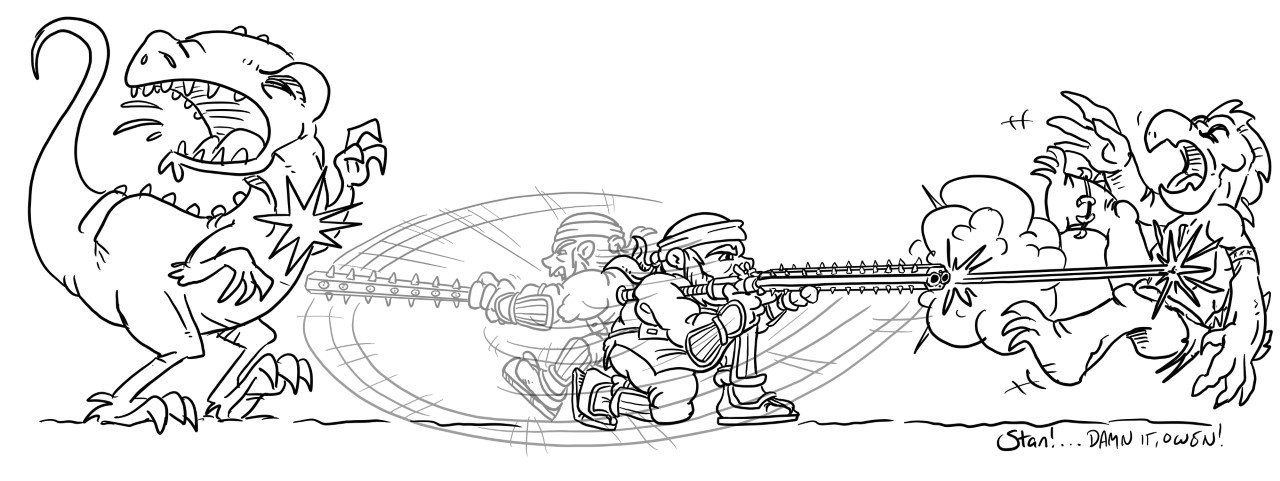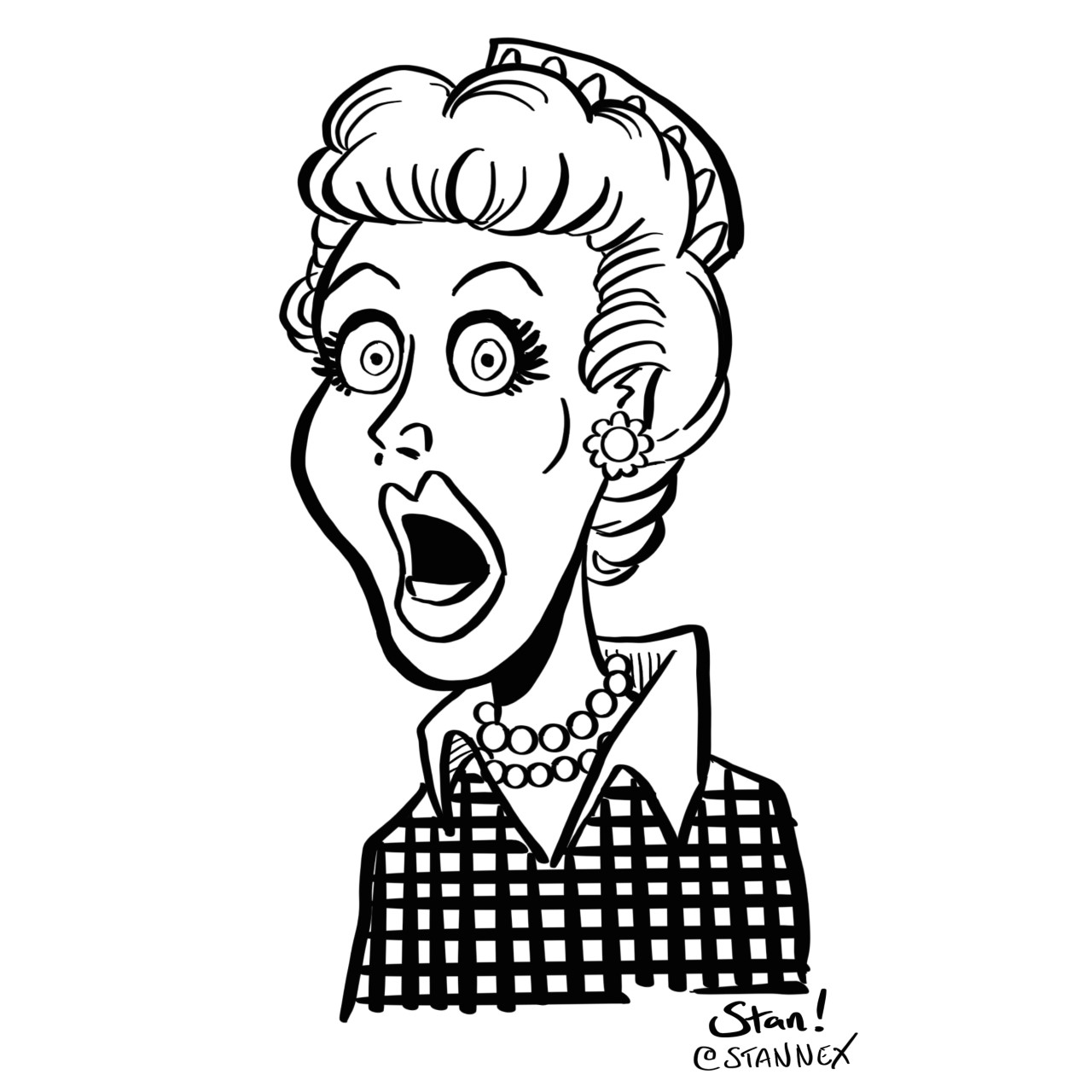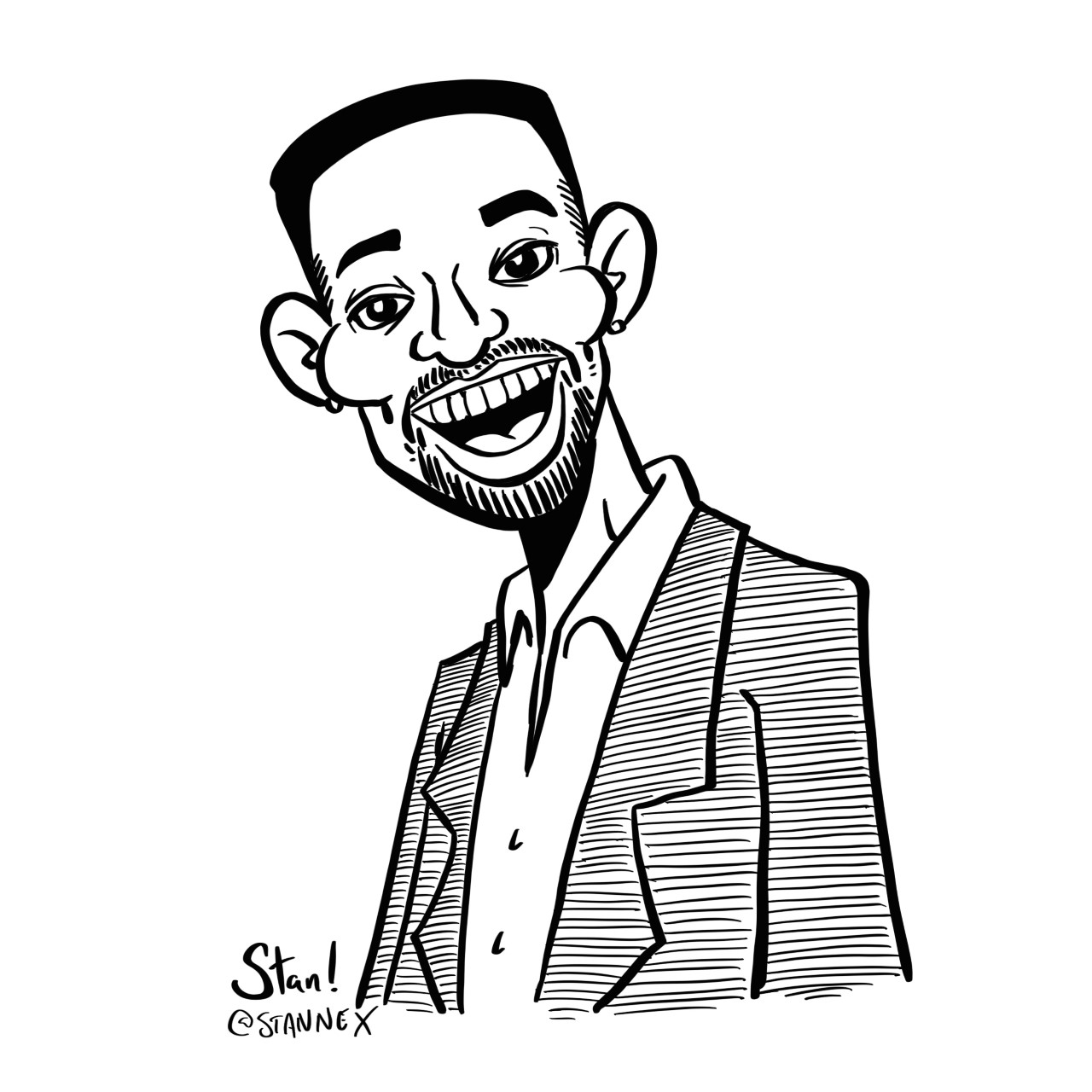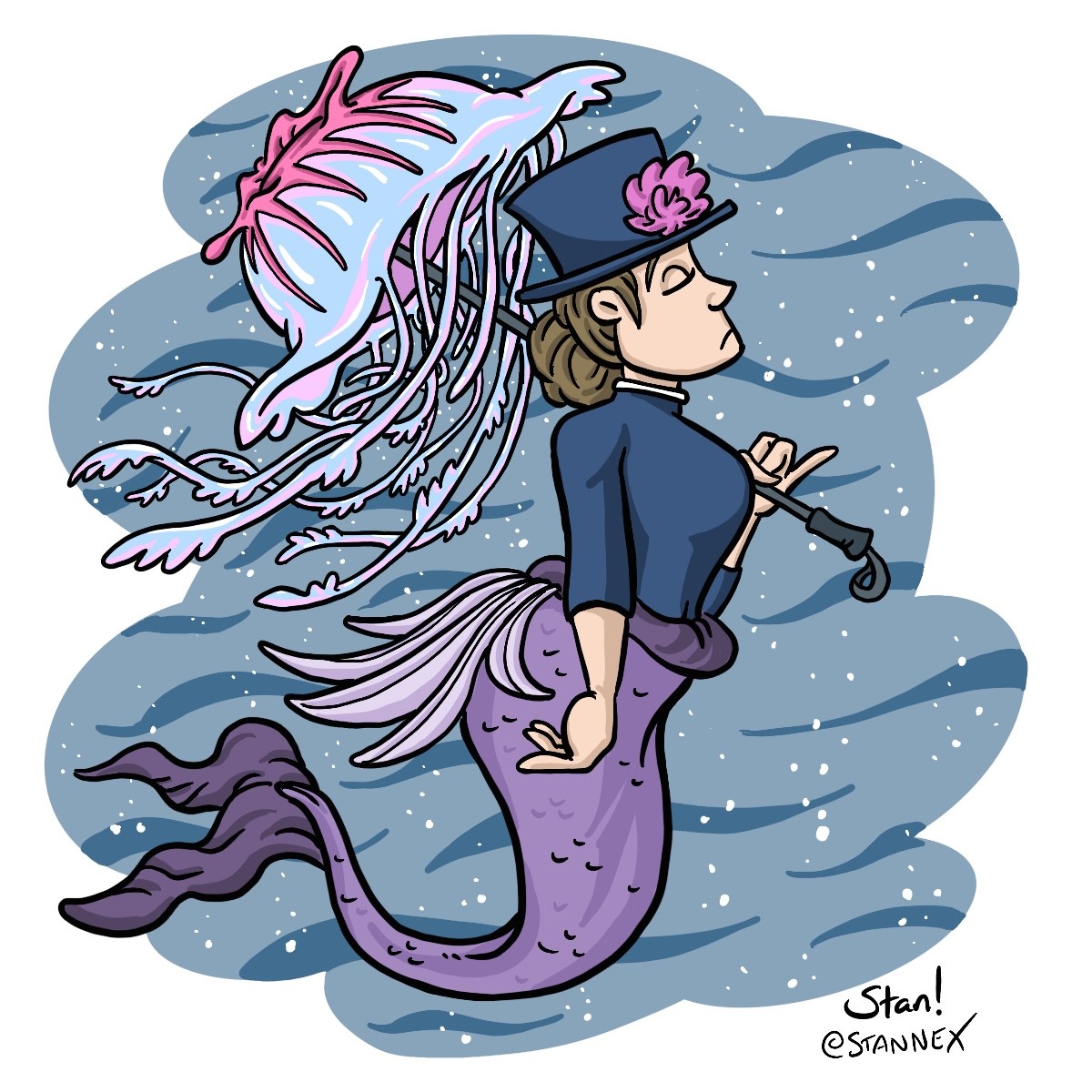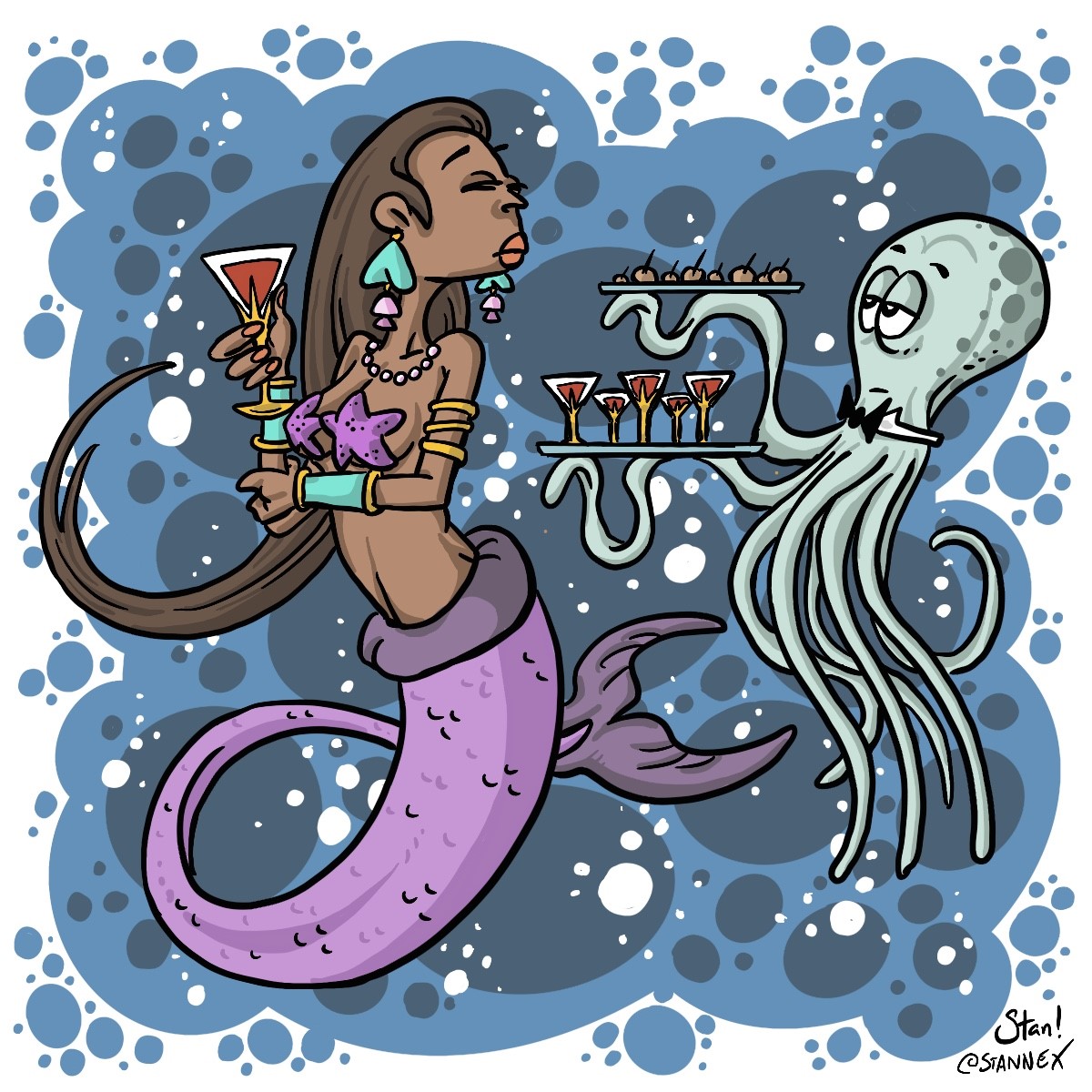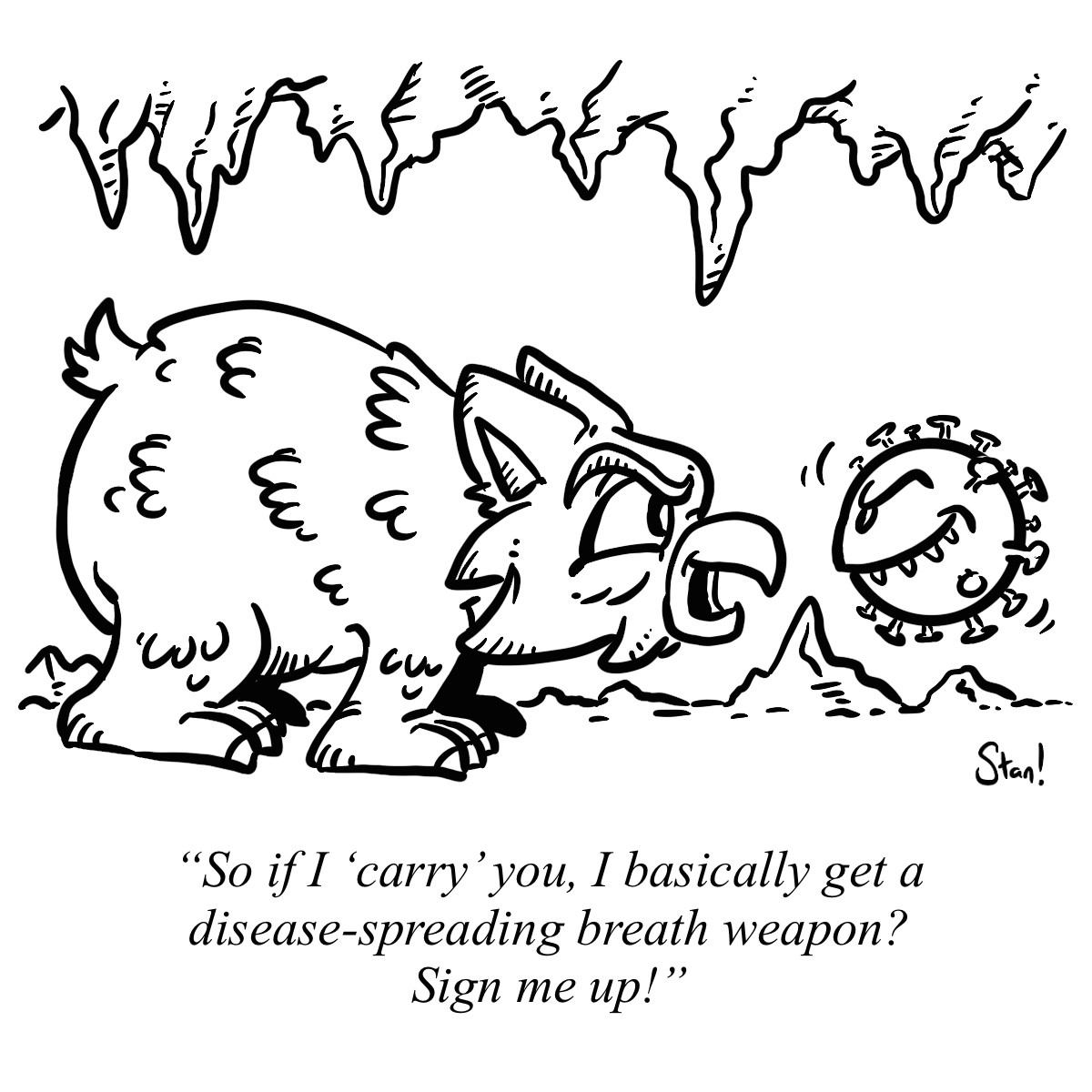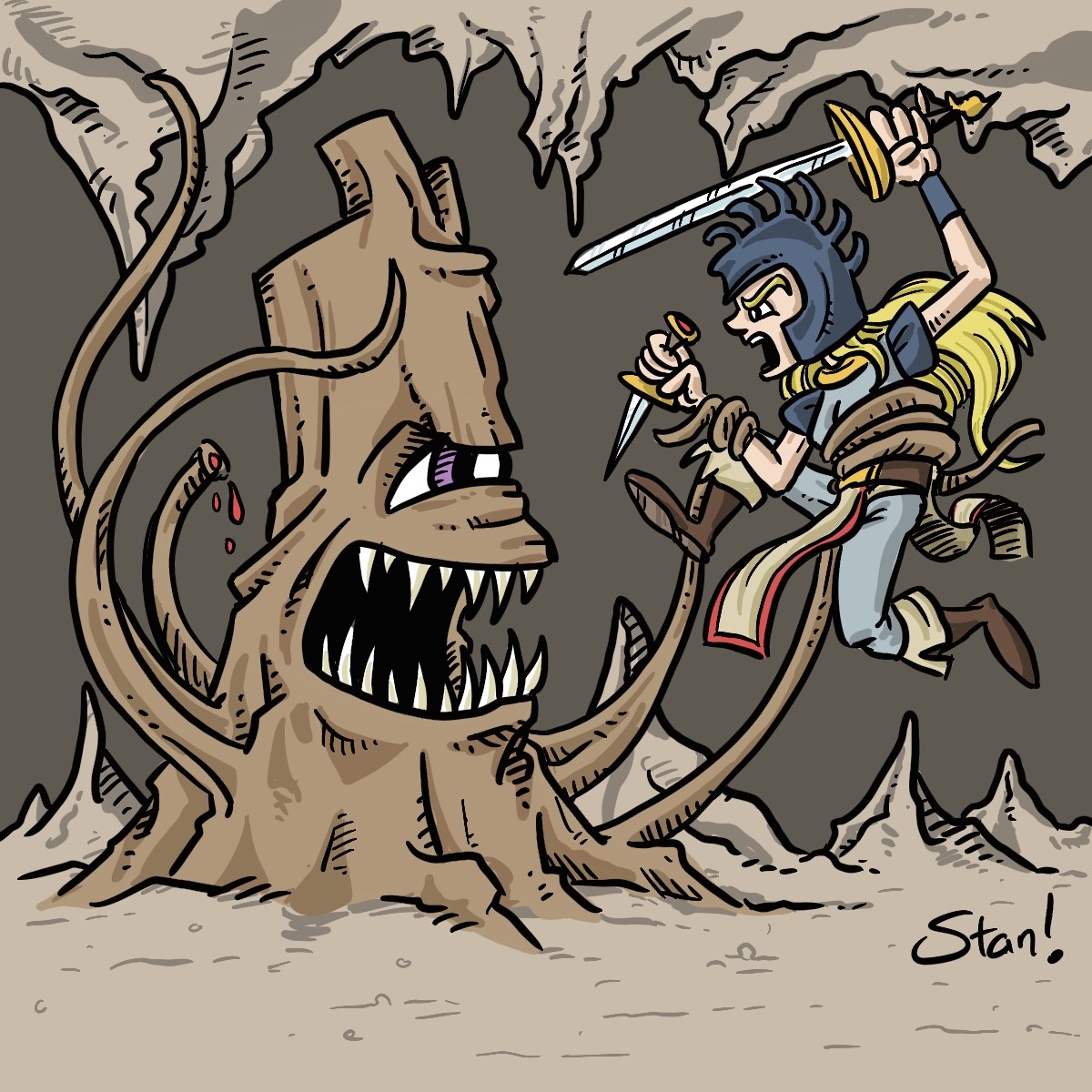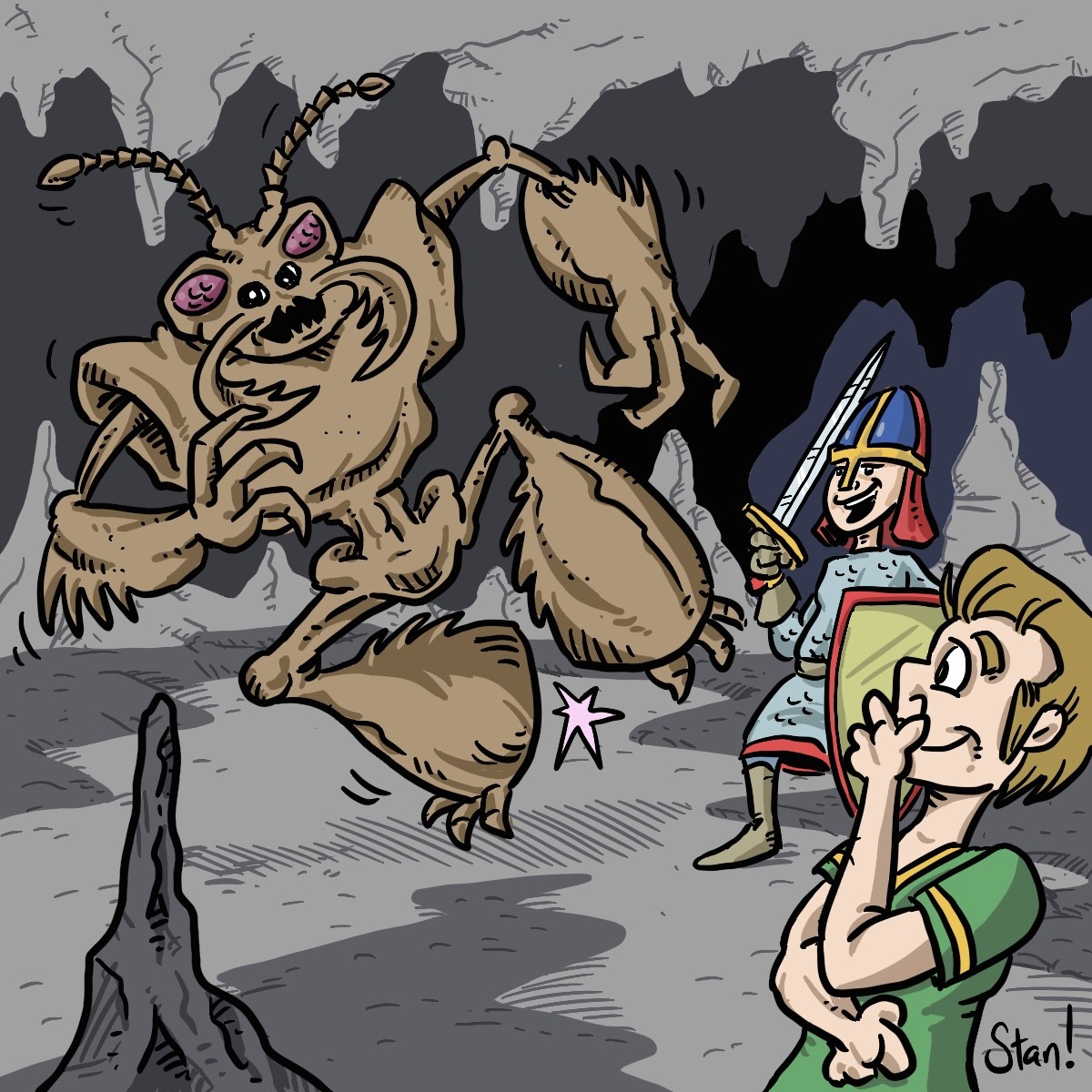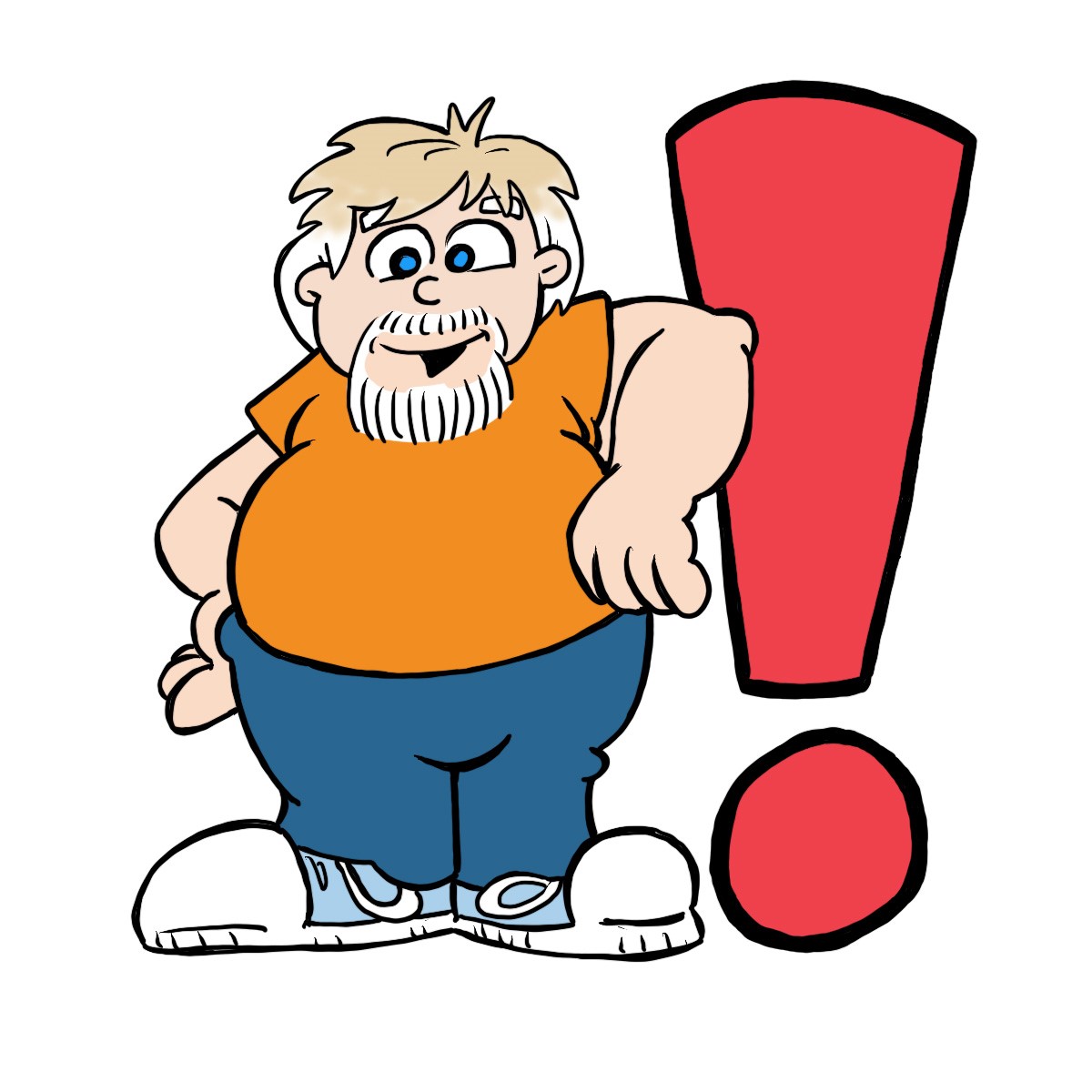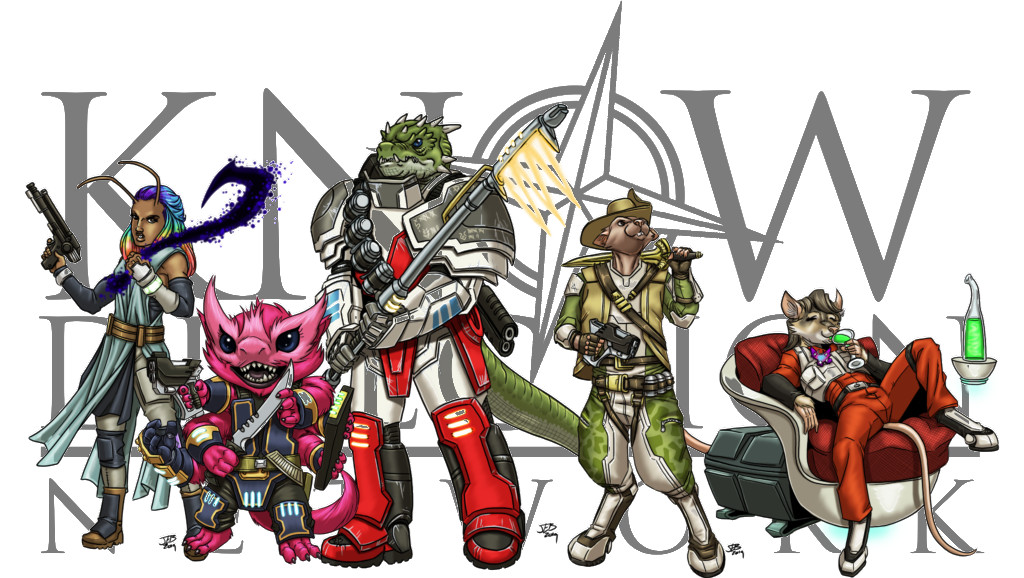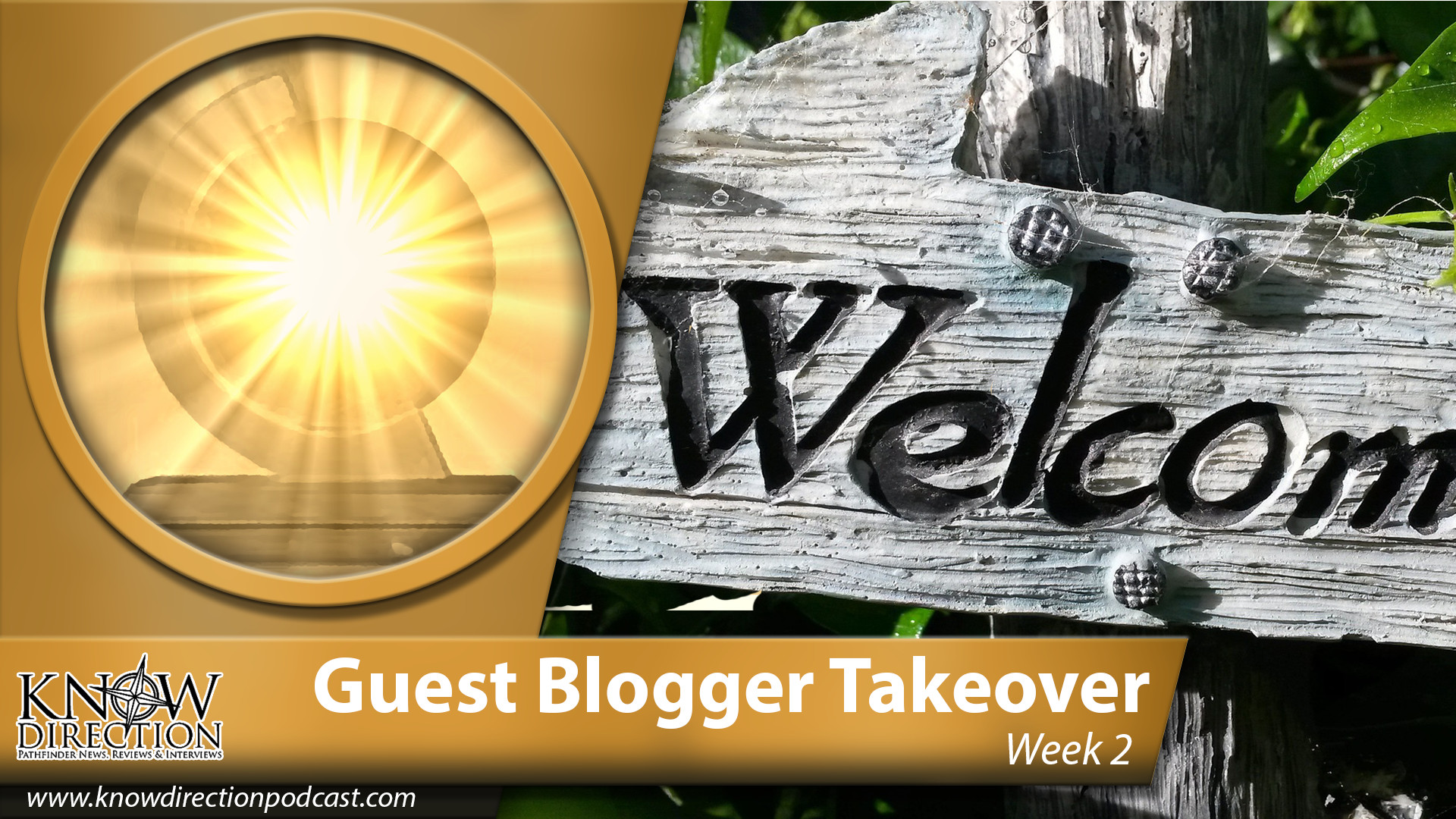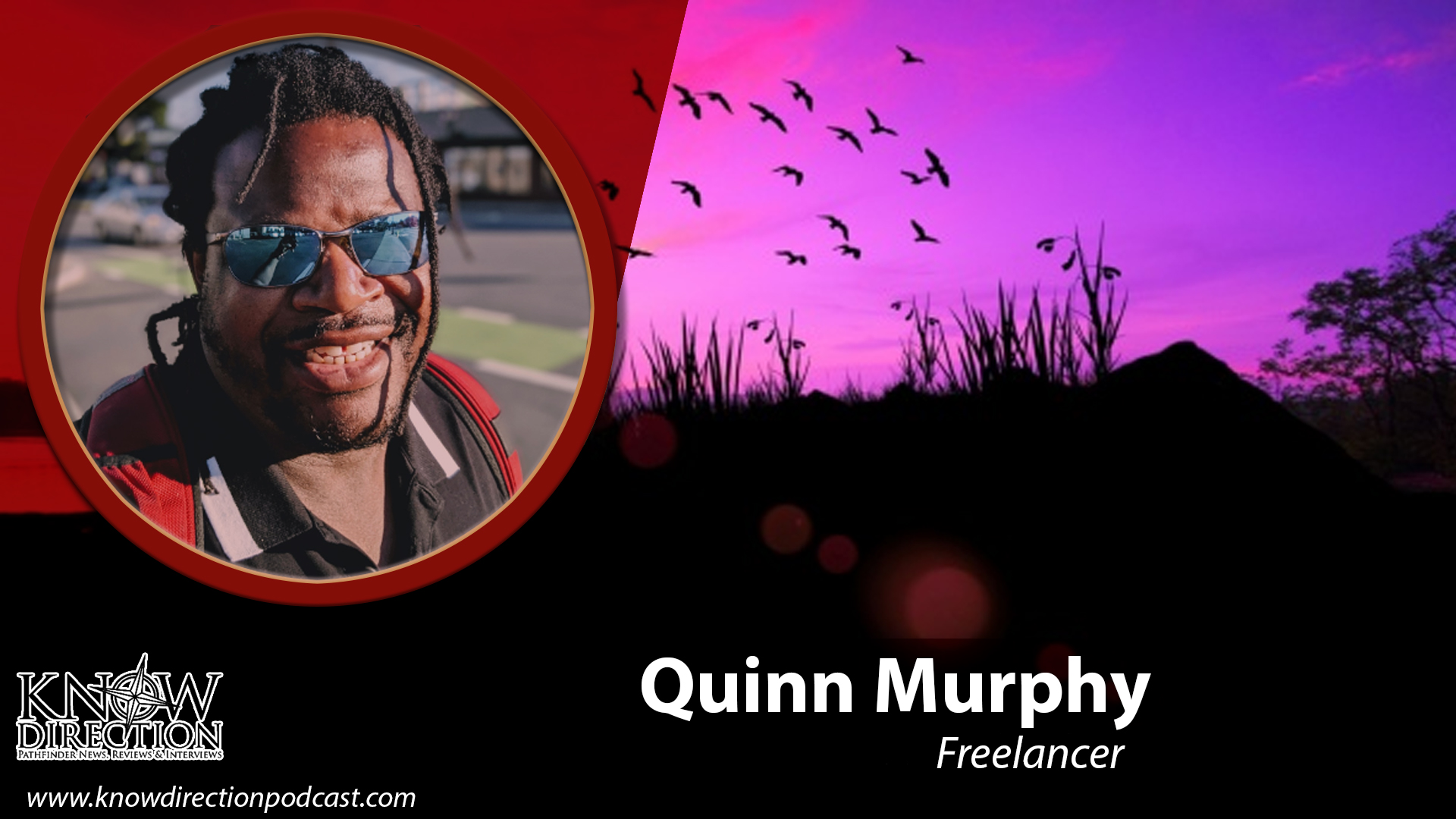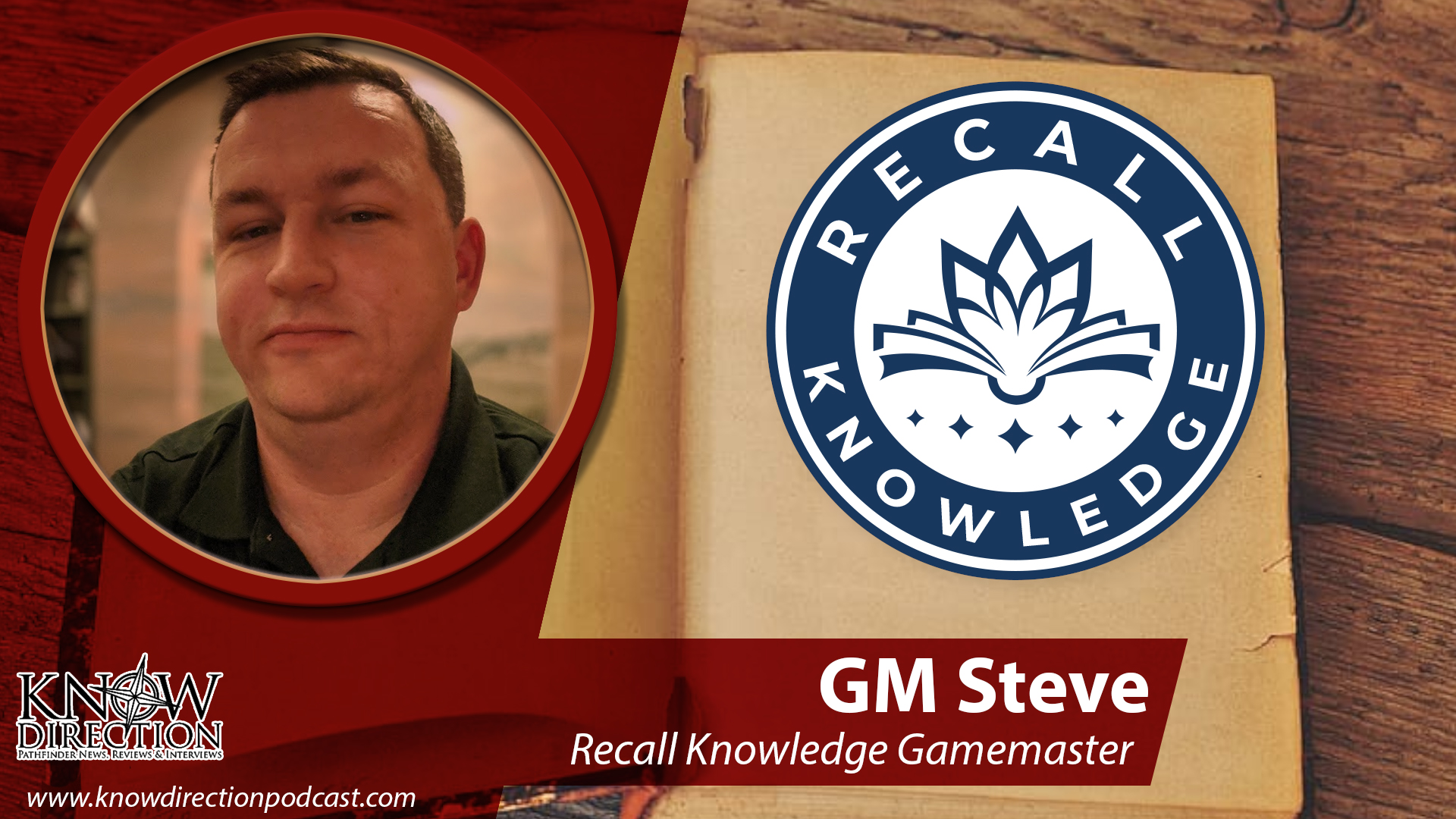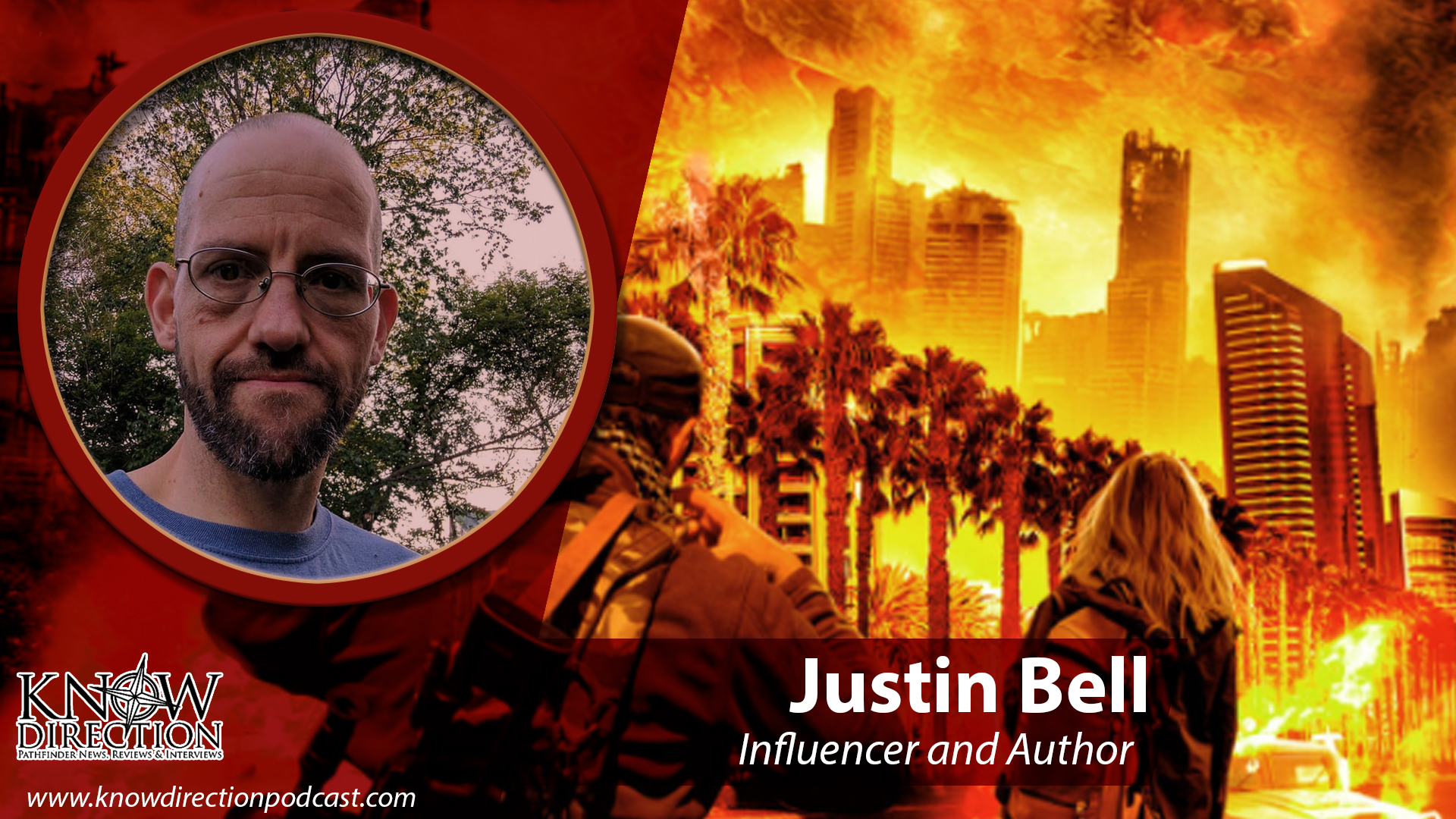I’m not making any kind of bold or insightful statement if I say that 2020 has been a tough year. We’ve all been dealing with the ramifications of a global pandemic since February, and every couple of months we’ve seen a new challenge added to the mix—the overnight collapse of the economy, massive unemployment, repeated violent acts of institutionalized racism, street-filling protests in most major cities, extremists taking advantage of the opportunity to foment violence, law-enforcement overreaction, deadly natural disasters, and the most divisive election season in the history of my country (and yes, my perspective is certainly biased to focus on events in the U.S, but 2020 has shown us the literal truth of the old political saw, “When America sneezes, the world catches a cold”). For me personally the tough times got started a little earlier, in December of 2019 when there was a fire in my apartment complex making the building uninhabitable.
So yeah … 2020 has been a real bear!
One of the blessings, though, of being someone who practices creative arts is that doing so serves as a dual salve. The acts of drawing, writing, and even doing game design are soothing for my nerves and help to lower my stress level. Sharing the results of my creativity through social media and with the help of small publishers helps provide moments of distraction and (I hope) fun to friends, family, fans, and followers, many of whom are facing much harder, more destructive, more painful losses and challenges than I am.
Having said that, though, one of the biggest challenges is that all of this chaos makes it very difficult to feel creative. My muse (or whatever you want to call the spark of inspiration that provides the germs and seeds that grow into creative projects) hasn’t been visiting very often. And when I force myself to sit down and generate ideas or just execute on one from my notebooks, I find my reserves of willpower and energy to be disappointingly low.
So what do I do? How do I remain creative and productive in a time where such things seem or feel so small, unimportant, and even wasteful?
First, I cut myself some slack.
Of course I’m not feeling particularly inspired—the world is on fire! Being creative requires letting your mind wander freely to drift off into uncharted realms. It takes a certain level of comfort and ease to allow your brain to generate strange connections and ask incongruous questions. And if there’s one group of things that’s in especially short supply these days, it’s comfort, relaxation, and carefree distraction. Our brains are constantly in “fight or flight” mode, not “ponder the possibilities of the infinite universe” mode.
Rather than getting frustrated or upset with myself for being unable to perform creatively at the drop of a hat, I show a little compassion. I tell myself that it’s all right—to just let whatever comes come, and that’s good enough. And if I’m patient and encouraging, things do come. Ideas do sprout, not at the speed or volume or quality level that I expect during ordinary times, but they sprout nonetheless. And once they’re here, I can develop them bit by bit with equal patience and compassion.
As I continue to give myself the understanding and encouragement, slowly I can put together enough pieces to add up to something that feels complete and worth sharing. That’s when the next phase of “pandemic panic” sets in as I find myself looking at my newly finished work and thinking, “What does it matter? With the world the way it is, who cares about such superficial, meaningless stuff? Why am I even bothering?”
Second, I remind myself that these things ARE important.
To begin with, being creative is important because it makes ME feel better. That in itself is important—it’s self-care. We all need healthy distractions and things that make us feel good, particularly in a world where nearly every outside event seems designed to ramp up our stress and haunt us with worry. Being creative is important because it puts me in a better emotional space and makes me better able to process and deal with the bigger problems of the world.
In a purely Machiavellian sense, as someone who makes a living doing creative things, these activities are important because they allow me to continue earning my income. This isn’t true for everyone, but if even a small bit of your income stream derives from work that you write, draw, design, or generate through some other form of artistic expression, finding a way to activate your muse even in a time of global distress is an act of self-preservation.
And finally, there are many people in the world who aren’t creators at all (in an artistic sense), but derive the same sort of benefits from consuming our creations. They distract themselves by reading, or blow off steam by playing games, or lower their stress by laughing at comics. In all of these cases, they can’t get those benefits if they don’t have access to our creations. It’s true, a comic or a game module or a short story are pretty inconsequential in the big picture. But comics, games, and fiction are key to helping folks stay sane and happy. Our “silly little creations” provide the “secret sauce” that helps to make the distasteful real world a little more palatable.
Third, I choose my projects carefully.
While this might seem like a time when the sky’s the limit and an ideal opportunity to dust off that big crazy idea that you never had time for in the past, in truth, for most of us the opposite is more likely the case. In a time when I’m struggling to stay focused and motivated, the best projects to take on are the small, familiar, and easily accomplished ones. I’m not looking to challenge myself—the world is already challenging me plenty. I’m looking for projects that I can start, complete, and be satisfied with in relatively short order so that I can use that positive feeling to spur me on to another project. Perhaps after a few successful outings, I then can start ramping up the difficulty and try something new or innovative
This strategy has a few advantages. Since I’m picking a small project that I know how to do, I also know how long it usually takes me and what the expected outcome is. This provides me with a gauge to how I’m doing compared to normal times. Am I working slower? Does the final result match my expectations? Is the process more tiring than it has been in the past? All of these are pieces of information that help me to understand my condition in both an artistic and a general sense. Remember, the first of the main goals is for this creativity to be a salve for my emotional state.
Additionally, if I am working on projects that can be completed quickly, I can share them quickly, too. This meets one of the secondary goals for this creativity—providing entertainment, distraction, and potentially even relief for other people (even if that’s just friends and family). Rather than having to wait weeks or even months for a longer, more ambitious project to be completed and ready for consumption, smaller projects can be wrapped up in a matter of days … sometimes even hours.
That’s not to say that you can’t have a “stretch goal” to eventually gather the small projects into a bigger one—comic strips that add up to a themed collection, short stories that turn out to be chapters in a novella, or paintings that have greater meaning when viewed as a collection. But the key right now in this moment is to focus on the individual piece. Let worries about the collective project come later.
My Pandemic Projects
So, after running my mouth off here about the value and process of finding time to be creative amidst all this chaos, it’s a fair question to ask: What projects did YOU do, Stan! … and have they helped you or anybody else?
Damn it, Owen!
My friend and publishing partner, Owen K.C. Stephens, is many things, but one of them is an absolute font of brief, social-media-sized bits of entertainment—funny typos, weird creature concepts, campaign nuggets, and hundreds of micro spells, feats, and magic items, just to name a few. When I see that he’s posted one that particularly tickles my funny bone, I grab my iPad and do a quick cartoon to go along with it. And in most cases I add the words “… Damn it, Owen!” near my signature (indicating that I had other things I needed to do, but his post was so entertaining it just sucked me in).
My goal is to get the Damn It, Owen! piece drawn, colored, and posted as shortly after Owen’s original post as possible. I can usually do it in under an hour if I’m online when he makes his post … but my GOAL is to do it in less than 30 minutes (so far I’ve managed that only once). These are great as creative exercises to generate an idea and a drawing off the cuff as quickly as possible. But I’m also reliant on Owen to post concepts that motivate me … so I can’t count on this as a regular creative outlet.
I’ve found the Damn It, Owen! drawings to be very helpful for me. They often serve as warm-up sketches early in the day, to get my creative juices flowing. What’s more, they are a kind of creative calisthenics—a little something to keep my artistic muscles limber. They’ve also been very popular with Owen (I mean, who doesn’t like having their work get “fan art”?) and his fans—some of whom are starting to anticipate (or even EXPECT) my contributions.
Coronacatures
When things started spinning out of control with Coronavirus and people were suddenly locking themselves in quarantine, many creative folks began offering up activities to keep their fans entertained. One of the first came from MAD Magazine cartoonist Tom Richmond, who also happens to be one of the premiere caricaturists of our time. I took a caricature workshop from Tom a couple of years ago, and I still want to improve my skill at that craft, so when he created a “Daily Coronacature” group, I joined. Each day he posted a new subject of the day whose likeness folks would try to capture and then post to the group so we could all see each other’s work.
As I said, I’ve always wanted to improve my skills as a caricaturist, and I knew that what was really required was to practice … A LOT … but I never really had any REASON to be doing caricatures and didn’t prioritize making the time to select subjects and do the research. Now here I had Tom doing all the prep work—all I had to do was DRAW. And so I did.
There was no pressure—I was doing this just for me. But I also posted my results for folks to see. Not all of them were successful, but I posted them anyway, sort of my way of saying to folks out there that you don’t have to be good at art to enjoy it … the fun is in the process. But as it turns out, doing a caricature a day for more than a hundred days straight ALSO had the result of helping me take my caricature skills up a notch (though I’ve still got plenty of room to improve).
My followers started coming to my social media each day to see if they could tell who I’d drawn BEFORE reading the caption. They both enjoyed that game and gave me much needed feedback on where I was doing well, and where I needed more improvement. So overall I’d have to say this endeavor has been a success, too.
MerMay
There are several month-long artist challenges that pop up online (right now we’re in the midst of “INKtober” or if you prefer “DRAWlloween”), and round about the end of April a few cartoonists I follow started talking about how excited they were for “MerMay.” As you might guess, this challenge is to draw a picture of a mermaid, merman, or some other half-fish creature each day during the month of May.
I had no intention of participating. First of all, I don’t find merfolk that inspirational, and on top of that, I was already doing the Daily Coronacature. But a friend of mine was waffling about giving it a try, and I thought he’d really enjoy it, so I started nudging him to do join in. Eventually he said, “I will if you will,” thinking that I’d back down and leave him alone. But I surprised him (and myself) by agreeing. So suddenly I was doing TWO daily drawings and, much to my surprise, having a very good time drawing merfolk and other sea creatures.
Most of these month-long artist challenges come with a list of inspirational prompts, but those aren’t by any means required. Indeed, the challenge is simply to do a drawing every day—the prompt lists are just hooks to get more people to participate, and a fun way to create a sense of community as you all share your solutions for the same prompt. But it’s perfectly fine to draw whatever you like within the bounds of the broader subject.
I was surprised at how successful MerMay was for me. I didn’t follow any of the prompt lists and came up with thirty-one aquatic illustrations that garnered me more positive feedback (email, likes, and shares) than I’d had in a long time. I’m still thinking that I might gather the drawings into a PDF or even print volume.
Shelter In Place Comics
During MerMay another friend asked me to participate in an activity that he was organizing. He was getting various artists he knew to post something relating to the pandemic lockdown—anything, really … a sketch, a doodle, a concept scribble. He just wanted to show some positive images that grew out of this troubled time. I agreed, and decided to work up a cartoon that looked at the coronavirus through the lens of fantasy/D&D. Pretty quickly I had a bunch of ideas sketched out, so I picked my favorite one, drew it as a digital line drawing, and sent it over.
Over the next few days I found myself thinking about the ideas that I hadn’t used. I liked most of them, too, so I decided to draw one a week until they were gone. The thing is, I kept adding more to my notebook. And more. And more. When May ended and I no longer had TWO daily drawings to do, I decided to start putting my Shelter In Place comics out three times a week … again, until the ideas ran out.
This went on throughout the spring and summer, growing to include gags that drew inspiration from the protests, national politics, and other timely topics alongside those based on the pandemic, still mostly through the lens of a fantasy world. Eventually I did more than 50 of them, only stopping when I got so busy with my temporary day-job with the U.S. Census that I didn’t have time to keep scratching out the ideas in my notebook. (Now that the Census work is winding down, though, I plan to restart the series as the presidential election picks up steam.)
In many ways, this was the most successful project of all. I started wanting to do one comic and wound up doing enough to fill a small book (more on that in a bit). Perhaps even more important, they got at least ten times the interaction that my drawings normally get, and got shared at least twenty times more often. Nothing went viral in a big way, but they did go further than anything else I’ve done all year.
Doodle Streams
My latest creative endeavor has been to try my hand at livestreaming. Using Facebook Live, I’ve held a couple of hour-long drawing homages to classic art from the 1st edition D&D books and hosting big Q&A sessions in the chat room while I work. Much to my surprise, I’ve enjoyed that process immensely and despite the streams have all had an audience of a dozen or more live viewers despite the fact that I did them with no promotion during late evening hours here on the west coast. I plan to continue doing these livestreams. They’re fun and they produce videos that I can share on my mostly empty YouTube channel. I’m starting to figure out the technology AND the knack of being a livestream host. I’m considering migrating the stream over to Twitch when I feel like I’ve worked out all the kinks and have enough of a selection picked out so that I know I can do the show for at least several months.
More Projects to Come
Remember how I said that it was possible to take the small, easy to complete, one off creative efforts and over time build them into larger projects? Well, I wasn’t just talking hypothetically. I’m currently getting ready to launch a Kickstarter to fund the printing of a book that collects the first fifty Shelter In Place comics. Now, this isn’t going to be one of those Kickstarters that raises big money and funds the start of a company. But given the interest that the comics themselves garnered, and how people are asking me when I plan to start posting more of them, it seems highly likely that it can pull in enough support to pay the cost of a short print run. This will get the book into the hands of my supporters and give me something I can sell at conventions (when we go back to having conventions). In fact, if it does well enough, I’m considering doing a second Kickstarter to print an art book of my MerMay drawings.
These are projects that never would have happened if it weren’t for my “one drawing at a time” approach just to distract myself from the pandemic. I had no intention of doing editorial cartoons or a book’s worth of merfolk art. But once the drawings were done, new options appeared.
I’ve really enjoyed this process of doing a little art each day, and it’s made 2020 one of my most productive years in a long time. In fact, I’m a little disappointed that the “economic recovery” of getting a day job (even a temporary one) has cut into my drawing time. I’d much rather keep doing the art every day … which is another reason for the Kickstarter. If I can find ways to make this process cover my expenses, I can keep doing it … and indeed do MORE.
Along those lines, I’m also getting ready to launch a Patreon account. (In point of fact, it’s already been launched … but I’m not telling folks about it because I’m not organized enough yet to reliably provide patron rewards, and I don’t want to solicit people’s support without providing something in return.) You can check it out at patreon.com/stannex … but if I were you I’d just hit “follow” for now. That way you’ll hear about it when there’s something going on that’s worth coming back and patronizing.
We’re six months into this pandemic now, and no one can say with any certainty when we’ll get back to even a semblance of normal. It’s by no means “too late” to start your own “pandemic art project.” A familiar format … small projects … building slowly … It’s a good recipe for fighting off the stress, anxiety, and depression that seem to be creeping in under every doorframe these days. And sharing it via social media is a good way to spread a little joy among your friends, family, and followers.
Bio
If you’re not sure whether Stan! is a cartoonist, an author, or a game designer, don’t fret—neither is he. Given his choice, he spends his time drawing cartoons, but he has also written two novels, four children’s books, sixteen short stories, and more than a hundred game products, not to mention the English adaptations for nearly two hundred volumes of manga (Japanese comic books).
Stan! lives in Kent, WA. You can find him online at www.Stannex.com and on Facebook, Twitter, Instagram, and Patreon @stannex.

